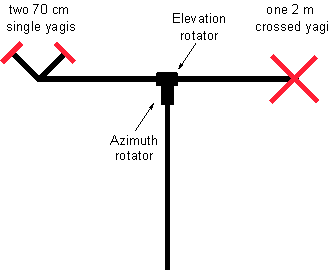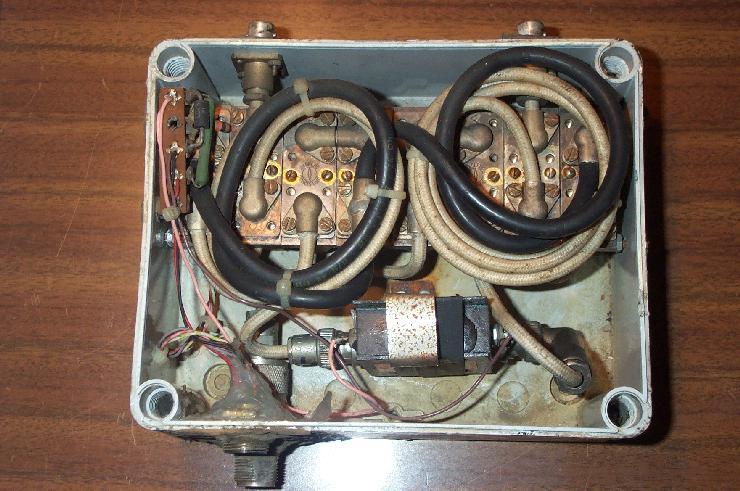
Hi, I am Tony I0JX
An
antenna system with four
polarizations, linear and circular
At VHF and UHF, hams utilize both linear and circular polarization:
Almost twenty years ago I decided to build an antenna system for both 2 meters and 70 centimeters having the possibility to generate four polarizations, i.e. horizontal, vertical, right-hand and left-hand circular. The system was built around:

To obtain the four polarizations I adopted the following circuit which utilizes four SPDT coaxial relays (K1 through K4).

The picture shows the length and the impedance of the various coaxial cable sections.
The two cable sections joining the antennas to relays K1 to K3 must be 50 ohm and have exactly the same length (marked "x"), though arbitrary.
The four sections joining relay K1 to K2, or relay K3 to K4, must all be 50 ohm and have a length that is either "y" (an arbitrary value) or "y" plus a given fraction of the wavelength (one half or one fourth). Clearly "y", once chosen, shall be identical for the four sections.
Two 75-ohm quarter-wavelength sections provide for the required impedance transformation before the two antennas are put in parallel (i.e. at the signals summation point). So the system output impedance remains 50 ohm.
Remember to take into account the cable velocity factor when cutting the various cable sections. .
The working principle is so explained:
I used a total of eigth coaxial relays, four for polarization switching (as discussed above) and four for switching in a preamplifier and grounding its terminals when not in use. It is important to use relays of the solder type, i.e. having no connectors, otherwise the system would become too bulky and losses would increase.
Below you can see the 144-MHz box with eigth coaxial relays mounted neck-to-neck in a water-proof box. You can see that this arrangement results in the shortest possible connections. The 430 MHz box is similar, apart from the shorter coaxial cable sections length.

50-ohm cable is teflon RG-141 (velocity factor: 0.695), while 75-ohm cable is RG-59 (velocity factor: 0.659).
All cable sections must be cut very precisely, especially those of the 430 MHz unit. The box shall be located fairly close to the antenna, so as to make the length marked "x" as short as possible (so reducing the inevitable errors when cutting lengths).
When the antenna elements are on the same boom (like the Tonna mod. 20822), the two radiators are inevitably offset by a few centimeters. Such mechanical shift must be compensated for by varying the length "x" on just one of the two paths (also in this case remember to take into account the cable velocity factor).
The results were outstanding, as the obtained polarization purity was very good for both the 144 MHz and the 430 MHz antennas.
Return to the I0JX home page
This page hosted by
![]() Get your own Free Home Page
Get your own Free Home Page